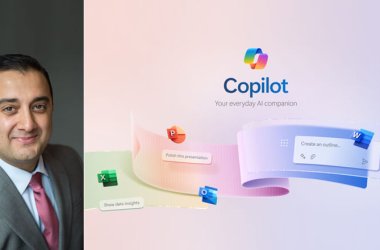Windows 8 launches Friday, and even if you haven’t been paying attention it’s still not too late to catch up on the essentials of what’s new and significant about the operating system.
Here are some frequently asked questions about Windows 8 and the answers that can promote an understanding of what’s important.
What is Windows 8 anyway?
Windows 8 is the new operating system from Microsoft as a follow-on to Windows 7.
Why all the hoopla about it?
Any new Microsoft operating system gets a lot of attention, but Windows 8 is a radical departure from earlier versions.
How so?
There are many ways.
Windows 8 has a new user interface based on touch and dubbed modern by Microsoft. Rather than icons, it features tiles — colored squares with the names of applications written on them — that can display live data, such as the tile for a weather application displaying the current temperature or a communications application displaying the latest message.
Microsoft has created a Windows Store where customers can download modern applications and where developers can sell modern applications they have written.
Windows 8 devices can be linked to SkyDrive, cloud-based storage where users can place documents and photos for safekeeping and reach them via SkyDrive accounts from any Internet connected machine.
Windows 8 retains a traditional desktop interface for those not ready for the modern, touch-centric one.
Doesn’t touch require special applications?
Yes, and Microsoft is encouraging developers to create so-called modern applications that appear well and take advantage of the features of Windows 8. For example, it promotes using the entire screen when designing apps since there is nothing displayed on the screen but the app itself — no “chrome” such as toolbars and taskbars.
Applications can also use the system tools within applications. For instance the system has a search tool to find applications and the like. When accessed from within an application, that same tool can launch a search within the application if the app is programmed properly.
One key characteristic is that these applications run in a logically isolated sandbox so they are insulated from infections that might be present on the machine and also protect the rest of the machine should they become infected.
Modern applications support both x86 and ARM hardware so can also be readily run on laptops, desktops, tablets and even phones with little modification.
How does that work?
With Windows 8 Microsoft is introducing Windows Runtime, the application architecture that enables cross-platform development. The architecture calls for use of common programming languages including C++/CX, C#, JavaScript and VB.NET.
Are there different versions of Windows 8?
Yes. Four of them.
Windows 8 is the consumer version for home use. Windows 8 Pro is aimed at more technically savvy personal users and businesses. Windows 8 Enterprise is designed for deployment in larger businesses and calls for a Software Assurance package. Windows RT is a version that runs on ARM processors.
Windows RT has some other differences. It is sold only in a package with hardware and runs only modern applications from the Windows Store. The exception is a special version of certain Office applications that come with the platform — Word, Excel, PowerPoint and OneNote.
What’s Windows 8 cost?
It depends. If you buy a Windows 7 computer before Jan. 31, you can upgrade to Windows 8 Pro for $14.99. Anybody with any supported version of Windows can upgrade for $40. Best Buy has a sale on Windows 8 Pro for $69.99, marked down from $199. Windows 8 Enterprise pricing is the cost of Windows 8 Pro plus a Software Assurance contract that can run $30 to $55 per year depending on how many machines it’s being bought for.
Windows RT comes with hardware so the price varies. Microsoft’s Surface RT devices start at $499.
What’s Surface?
Surface is the name given to a hybrid laptop/tablet that Microsoft itself is making . It comes in two major versions. One that runs Windows RT called Surface RT that comes installed on an ARM-based machine, and it supports only modern applications. The other runs the full Windows 8 on x86 machines that support both modern and traditional Windows applications.
Why is that significant?
Microsoft traditionally lets hardware OEMs sell hardware packaged with its software, and Surface puts them in competition with its partners.
Why would they do that?
It may be the company wants to show off Windows 8 to best advantage and wants to make sure there is at least one platform that optimizes the experience.
What’s a hybrid laptop/tablet?
In the case of Surface, it’s a touchscreen tablet running Windows 8 that can be fitted with an optional cover that doubles as a keyboard just 3 millimeters thick.
When is Windows 8 available?
Oct. 26.





